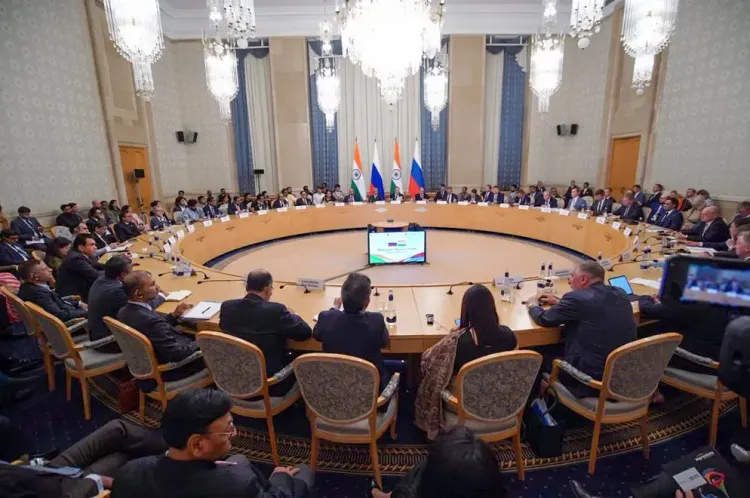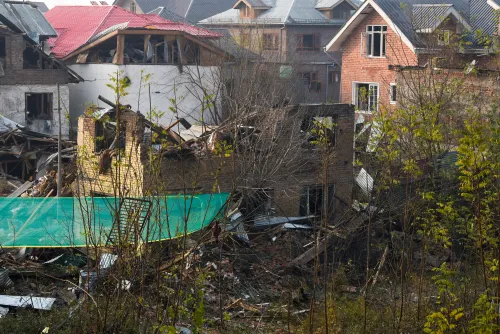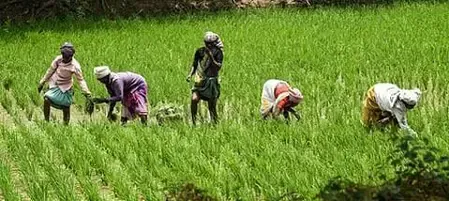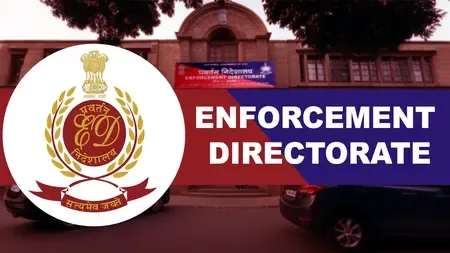What Are the Latest Developments on the India–Eurasian FTA in Moscow?

Synopsis
Key Takeaways
- Commerce Secretary Rajesh Agrawal held vital discussions in Moscow.
- The focus is on the India–EAEU Free Trade Agreement.
- Aim to achieve $100 billion in bilateral trade by 2030.
- Engagement with Russian officials to enhance trade and investment.
- Discussions cover critical sectors like pharmaceuticals and automobiles.
New Delhi, Nov 16 (NationPress) Commerce Secretary Rajesh Agrawal engaged in discussions in Moscow with Russian officials regarding the proposed India–Eurasian Economic Union (EAEU) Free Trade Agreement, as stated by the Commerce Ministry on Sunday.
During his visit, the Commerce Secretary met with Andrey Slepnev, the Minister responsible for Trade within the Eurasian Economic Commission, and Mikhail Yurin, the Deputy Minister of Industry and Trade of the Russian Federation. He also participated in a business networking plenary with representatives from both Indian and Russian industries, as highlighted in the statement.
The talks were built on the results of the India–Russia Working Group on Trade and Economic Cooperation, maintaining a focus on market diversification, enhancing supply chain resilience, ensuring regulatory clarity, and fostering balanced growth in their partnership. These initiatives are aligned with the leaders’ target of achieving $100 billion in bilateral trade by 2030 and boosting Indian exports through joint industrial and technological ventures.
In his meeting with Minister Slepnev, the Commerce Secretary examined the forthcoming steps for the India–EAEU FTA concerning goods. The terms of reference, which were signed on August 20, 2025, outline an 18-month action plan aimed at diversifying markets for Indian entities, including MSMEs, farmers, and fishermen. Following the leaders’ guidance, the discussions will also encompass services and investment tracks as the process progresses, as per the statement.
In his conversation with Deputy Minister Yurin, the Commerce Secretary sought methods to improve trade diversification, strengthen supply chain resilience, and foster collaboration in critical minerals. Both parties deliberated on a structured approach across vital sectors such as pharmaceuticals, telecom equipment, machinery, leather, automobiles, and chemicals.
“A quarterly engagement between regulators was agreed upon to tackle certification requirements, listings of agricultural and marine businesses, and to prevent monopolistic practices along with other non-tariff challenges. The dialogue also addressed practical measures related to logistics, payment systems, and standards to enhance predictability and facilitate business operations for firms in both nations,” stated the announcement.
During the industry plenary, which included senior business executives from both countries, the Commerce Secretary urged companies to synchronize their projects with the 2030 bilateral trade objectives. He emphasized India’s advancements in logistics, digital public infrastructure, and the potential for co-investment and co-production across various goods and services.
The discussions underscored the necessity to widen the export portfolio, mitigate supply chain risks, and convert planned initiatives into actionable contracts that drive value and volume, thereby creating more jobs and long-term prosperity for citizens in both nations.
As a reliable ally for nations at different stages of development, India is committed to enhancing its trade and economic collaboration with Russia, aspiring to achieve the vision of Viksit Bharat (Developed India) by 2047, as the statement concluded.









